From November 19, 2021 to March 27, 2022, the Gallerie d’Italia in Milan ’s Piazza Scala will host a major exhibition dedicated to the theme of the Grand Tour: entitled Grand Tour. A Dream of Italy from Venice to Pompeii, curated by Fernando Mazzocca with Stefano Grandesso and Francesco Leone and with the general coordination of Gianfranco Brunelli, the exhibition traces the myth of that extraordinary phenomenon of universal character that was the “Grand Tour,” the educational trip to Europe that became a habit among literati, artists, young gentlemen and members of European aristocratic and cultured society between the 18th and 19th centuries and that contributed in a decisive way to creating that perception of Italy linked to the beauty of its environment and art. Italy in this era was a privileged destination because only in our country could classical culture achieve an accomplished synthesis of nature and history. The “great voyage” (the expression was first used in 1697, in Richard Lassels’ volume, An Italian Voyage) was soon understood as an essential moment of an educational and formative journey, as well as a sign of a precise social status.
Italy represented an obligatory stop for artists and scholars who loved architecture, painting and sculpture, both ancient and modern. The extraordinary eighteenth-century archaeological discoveries at Herculaneum and Pompeii added new reasons for interest. This moment of education, which became obligatory for European elites, but later also for those from other continents, involved sovereigns, aristocrats, politicians, churchmen, men of letters, and artists, all fascinated by the variety of the still intact Italian landscape, the majesty of the cities, monuments and works of art that made, and still make, our territory a kind of wonderful “diffuse” museum.
In the exhibition, paintings, sculptures and art objects intend to re-propose the image of the Italy loved and dreamed of by a Europe that recognized itself in common roots of which precisely our country had been the great laboratory for centuries, a composite Italy, depicted in its poignant beauty by the artists who gave rise to the myth of the “bel paese.” On display are works by the leading artists of the time such as Piranesi, Valadier, Volpato, Canaletto, Panini, Lusieri, Hubert Robert, Jones, Wright of Derby, Hackert, Volaire, Ducros, Granet, Valenciennes, Catel, Batoni, Ingres, and the two painters Vigée Lebrun and Angelica Kauffmann. Places (traditional cities such as Venice, Florence, Rome and Naples, and historic villages) and landscapes (from the Alps, to Vesuvius, to Mount Etna) are particularly prominent in the Milan exhibition. The main destination of the Grand Tour was certainly Rome, the universal and eternal city, first the capital of antiquity and then of Christianity, where people came to study the secrets and canons of beauty, deposited not only in ancient marbles but also in the masterpieces of the Renaissance and seventeenth-century Classicism. While in Latium they retraced the places celebrated in classical literature that, through Horace and Virgil, had entered myth.
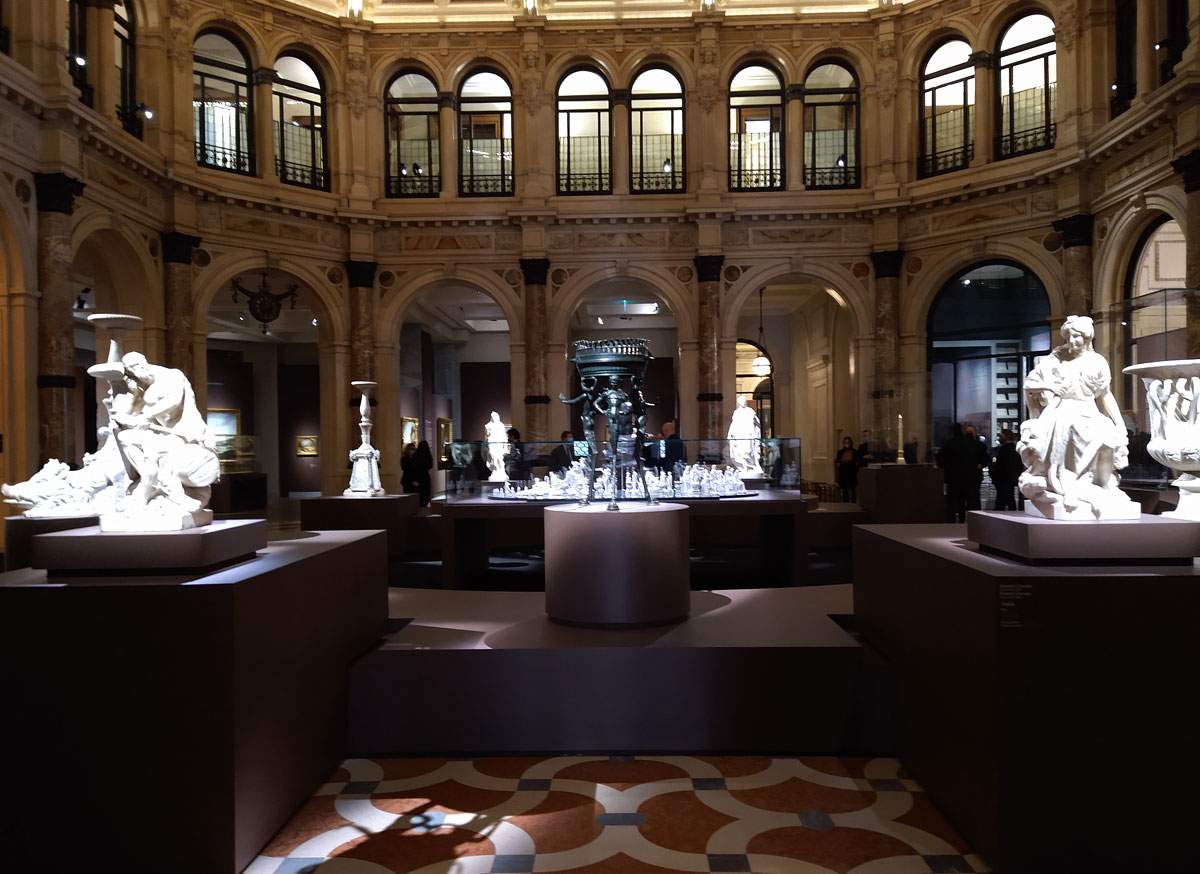
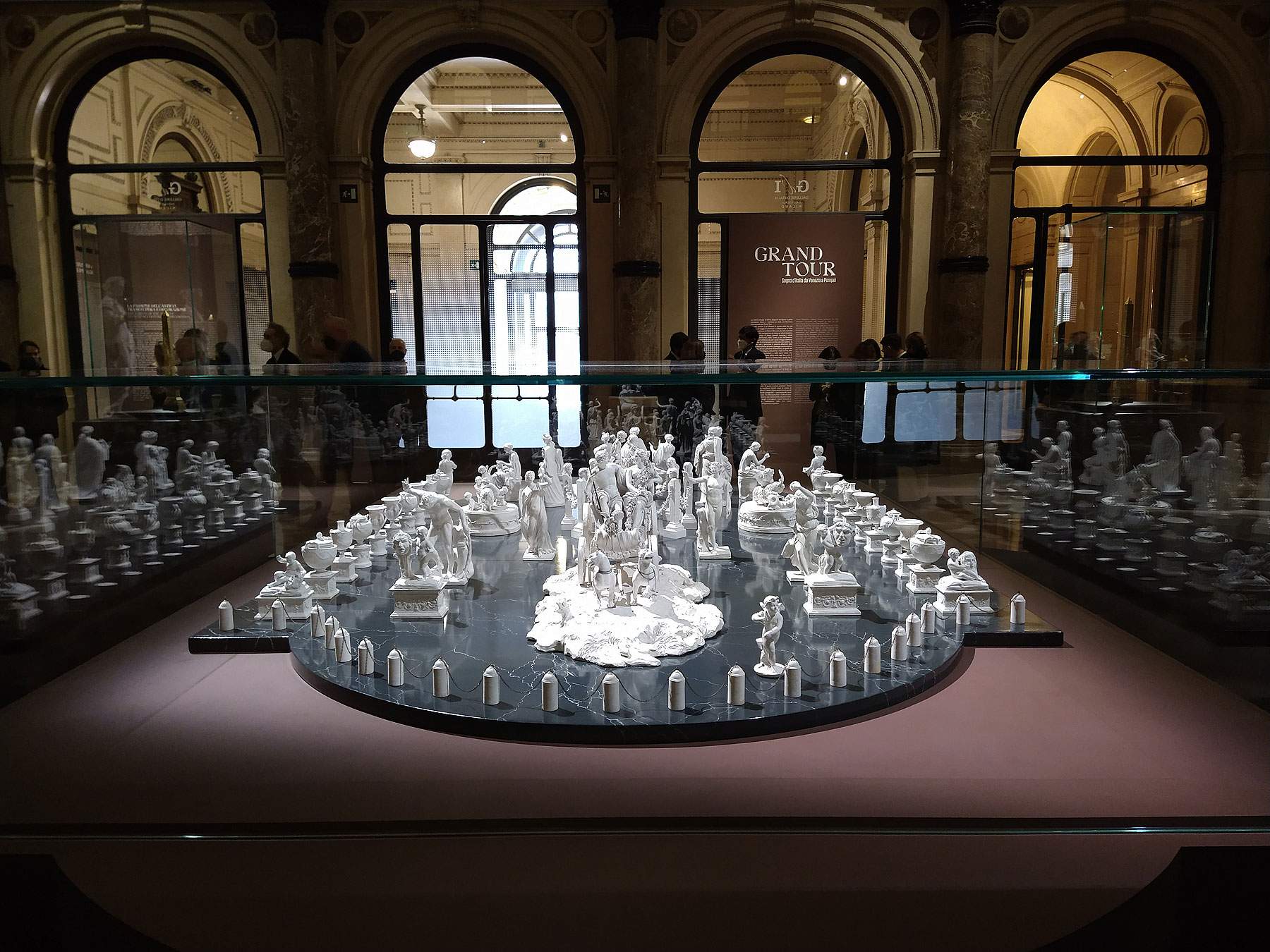
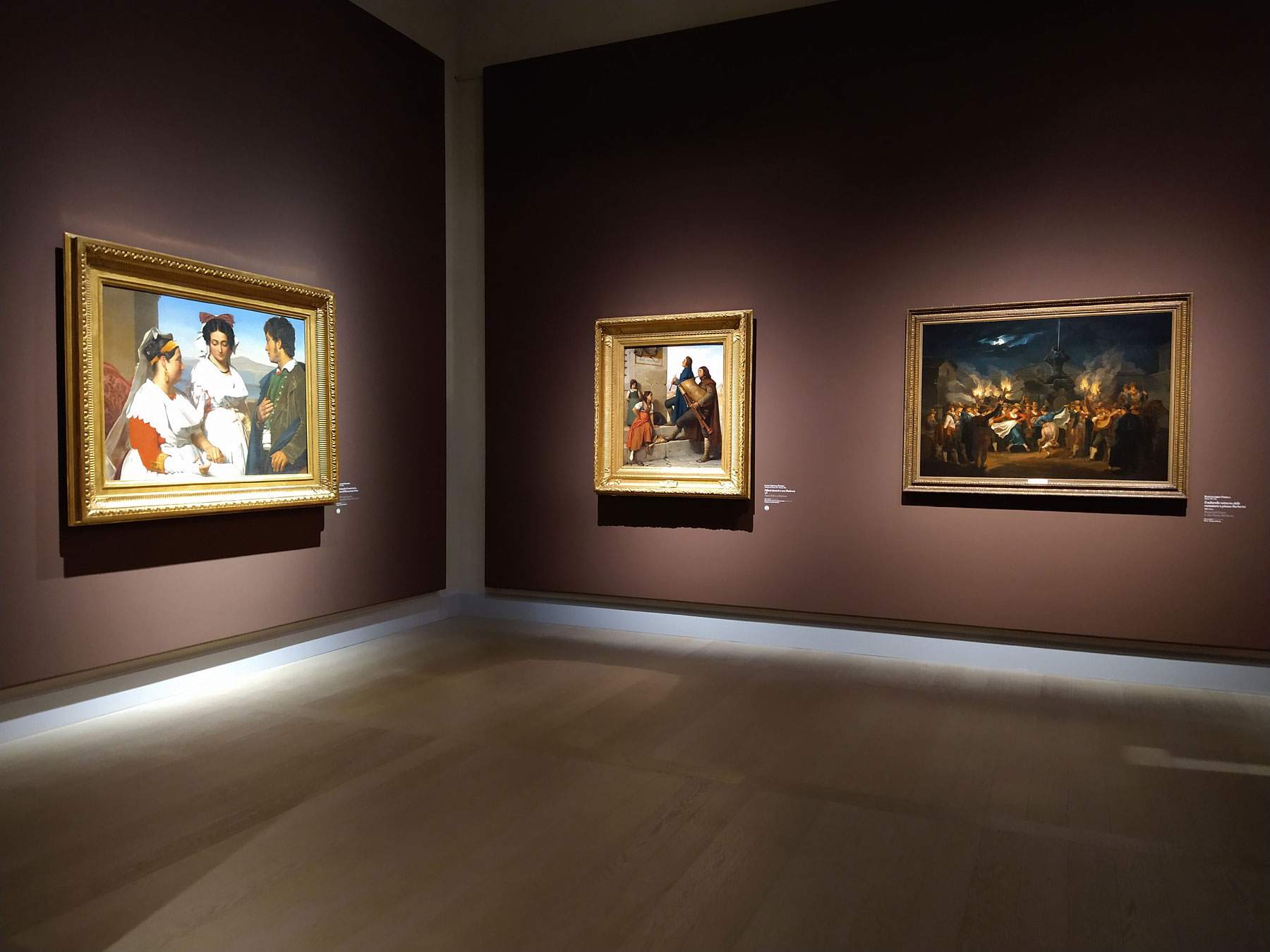
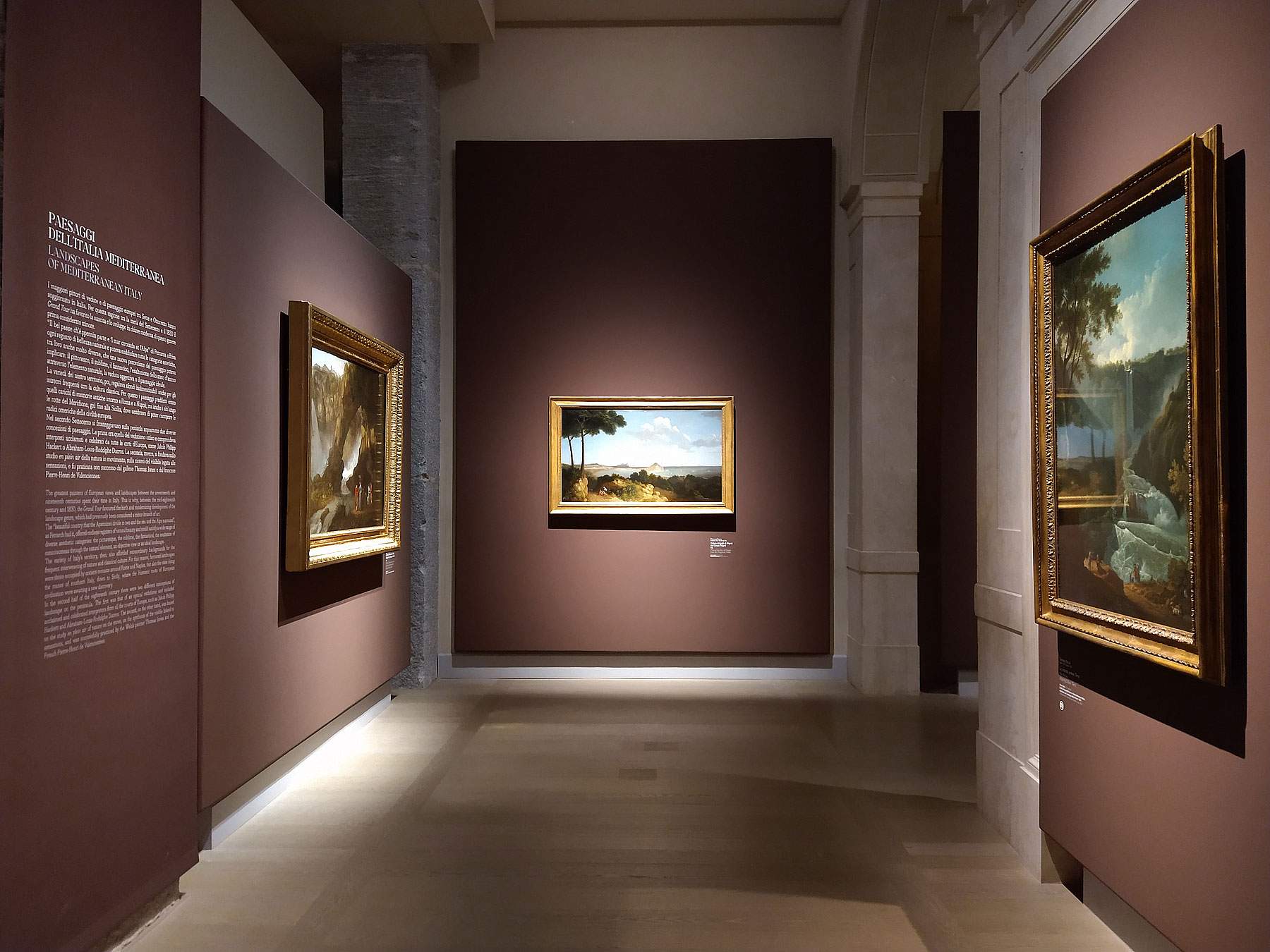
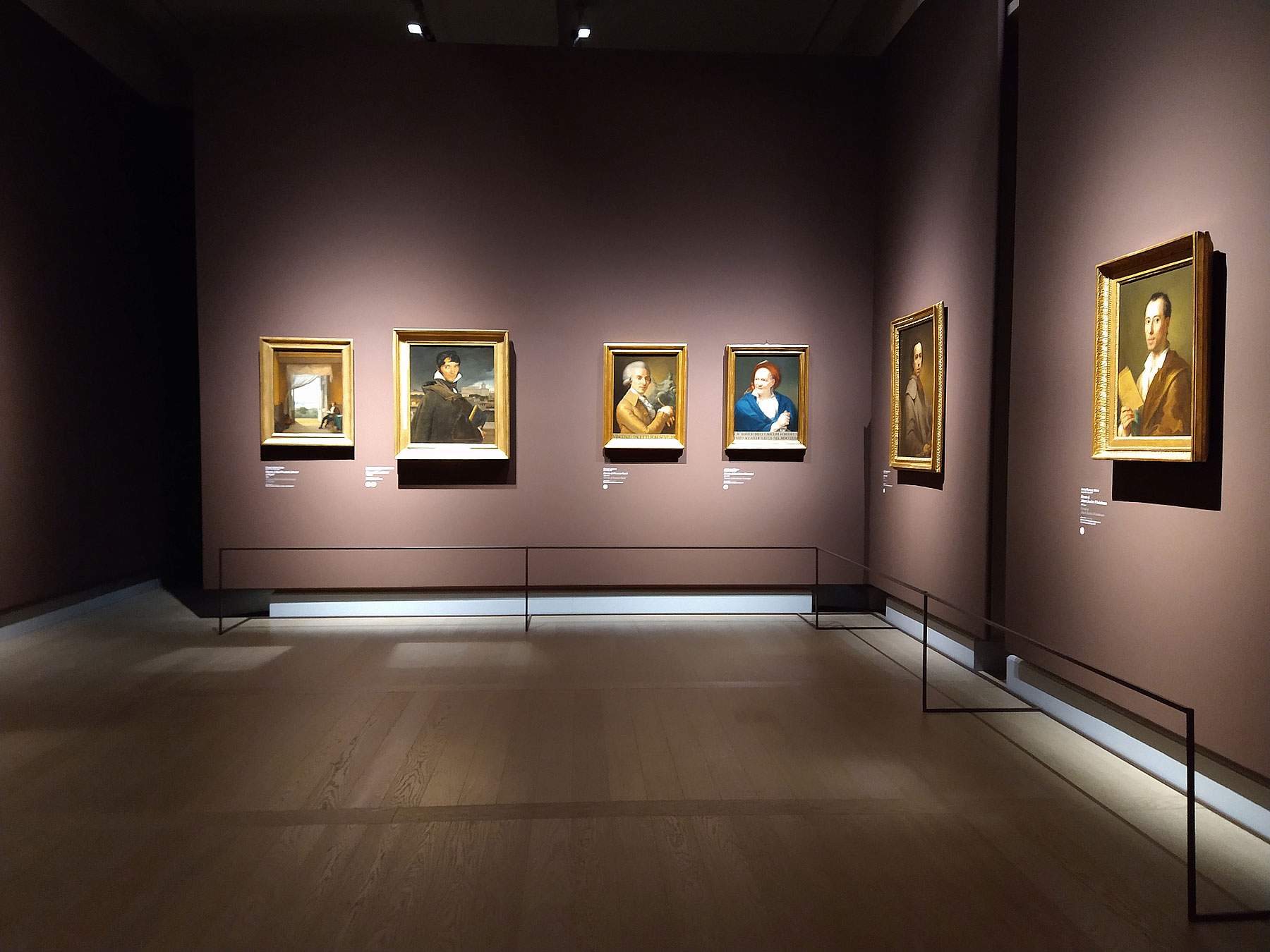
The magnificence of the landscape of the Gulf and the Vesuvian area, combined with the fascination of the vestiges of antiquity, especially after the rediscovery of the two cities of Pompeii and Herculaneum, buried by the catastrophic eruption of Vesuvius in 79 AD, made Naples the other must-visit destination of this educational and training trip, which was then also extended, again in Campania, to the recovered area of Paestum where it was possible to thrill in front of the sublime spectacle of the magnificent Doric temples, at a time when Greece, still under Ottoman rule, was forbidden to travelers. Always the vestiges of Magna Graecia drove the most daring travelers, and one of the first was Goethe on his famous trip to Italy, to the more distant and unknown Sicily, destined to enchant with the ruggedness of its primitive landscapes and the grandeur of the temples of Segesta, Selinunte and Agrigento, or the Greek theater of Syracuse. Other privileged places of the Grand Tour were eventful cities such as Venice, or Vicenza, where it was possible to admire the palaces of a universal genius like Palladio, imitated throughout the world, and then again Florence, which in its churches and collections, especially the Medici Galleries, opened to the admiring eyes of travelers the wonders of the ancient as well as the Renaissance. Later, Milan too, thanks mainly to the presence of Leonardo and his legendary Last Supper, and the nearby lakes, for the splendor of their shores and villas famous since antiquity, became destinations for discerning travelers.
In the same era, Italy became for a long time the largest market not only for ancient art, but also for contemporary production inspired by the memory of antiquity. Undoubtedly the most original protagonist of this taste was the genius of Giovanni Battista Piranesi, who in his visionary engravings and whimsical furnishings had proposed to a refined international clientele a very personal vision of classical imagery. In his wake there was an impressive revival of the most prestigious artistic manufactures, which, from bronzes to goldsmithing to mosaics to glyptics, reached levels equal to those of the Renaissance. Valadier’s prestigious assemblages in precious metals and stones have enchanted the whole world, while images of the most popular ancient sculptures have been spread to European royal palaces and aristocratic residences by the bronzes of Boschi, Zoffoli, Righetti, and Hopfgarten or by Volpato’s marvelous biscuit figurines. From the demands of foreign collectors, painting also gained a new impetus, especially a genre previously considered minor such as vedute and landscape. In this field, too, thanks to artists of the originality and greatness of Canaletto, Panini, Joli, Lusieri, and the foreigners who came in the wake of travelers, such as Hubert Robert, More, Wilson, Jones, Wright of Derby, Hackert, Volaire, Ducros, Granet, Valenciennes, and Catel a previously unthinkable level was reached between the eighteenth and nineteenth centuries, moving from the scientific rationality of the vedutists to the emotion of the landscape seen as an expression of a state of mind of the Romantics.
However, the genre most in demand and beloved by foreign collectors, along with views of places visited, was the portrait. The celebration of one’s rank was replaced by the exaltation of character and culture. Hence the choice to have himself portrayed alongside the ancient monuments and sculptures admired in Italy. Absolute master in this field was Batoni, one of the greatest portrait painters of all time. His portraits represented a status symbol, such as those of his rival Mengs, of the two competing painters Vigée Lebrun and Angelica Kauffmann, of Von Maron, Tischbein, Sablet, Zoffany, Fabre, Gérard, and Ingres. Travelers were also attracted by the uniqueness of our customs and the beauty of a seemingly happy population that lived most of the year in the open air precisely because of the mildness of the climate. An extraordinarily popular illustrator and painter such as Pinelli and painters such as Sablet, Géricault, Robert, Schnetz, and Delaroche were able to depict domestic life in its most compelling and moving aspects, vindicating the dignity of the people. The greatest business involved sculpture, beginning with the trade in ancient marbles, their restoration and often the production of copies in which Cavaceppi was the major player. Toward the end of the eighteenth century, thanks to Canova and his very valid followers, the production of original sculpture, which, while inspired by antiquity, was able to interpret modern sensibilities, was joined by the production of sculpture, assuring this art, which had become the pride of Italy, an extraordinary fortune during the nineteenth century throughout the world.
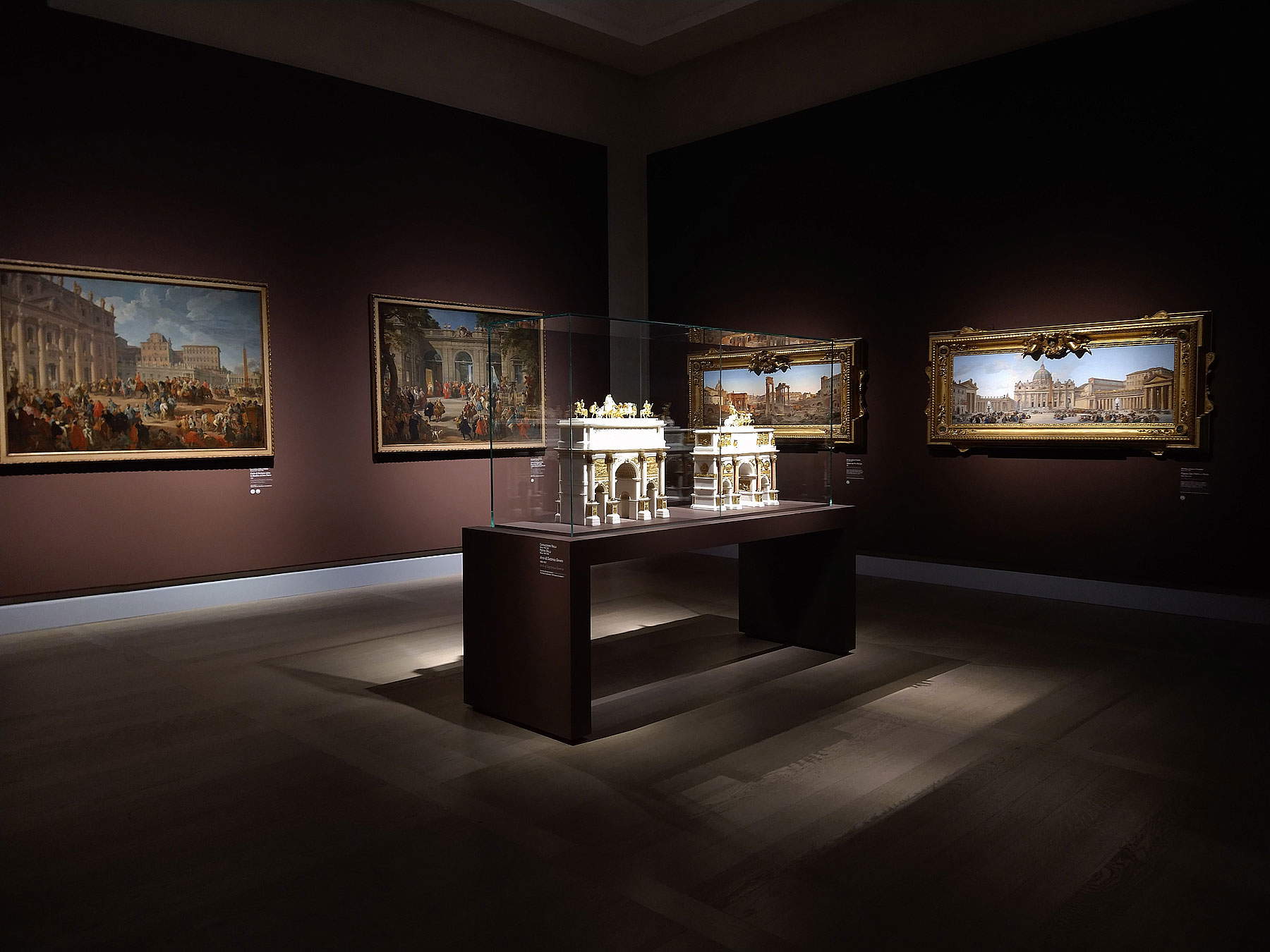
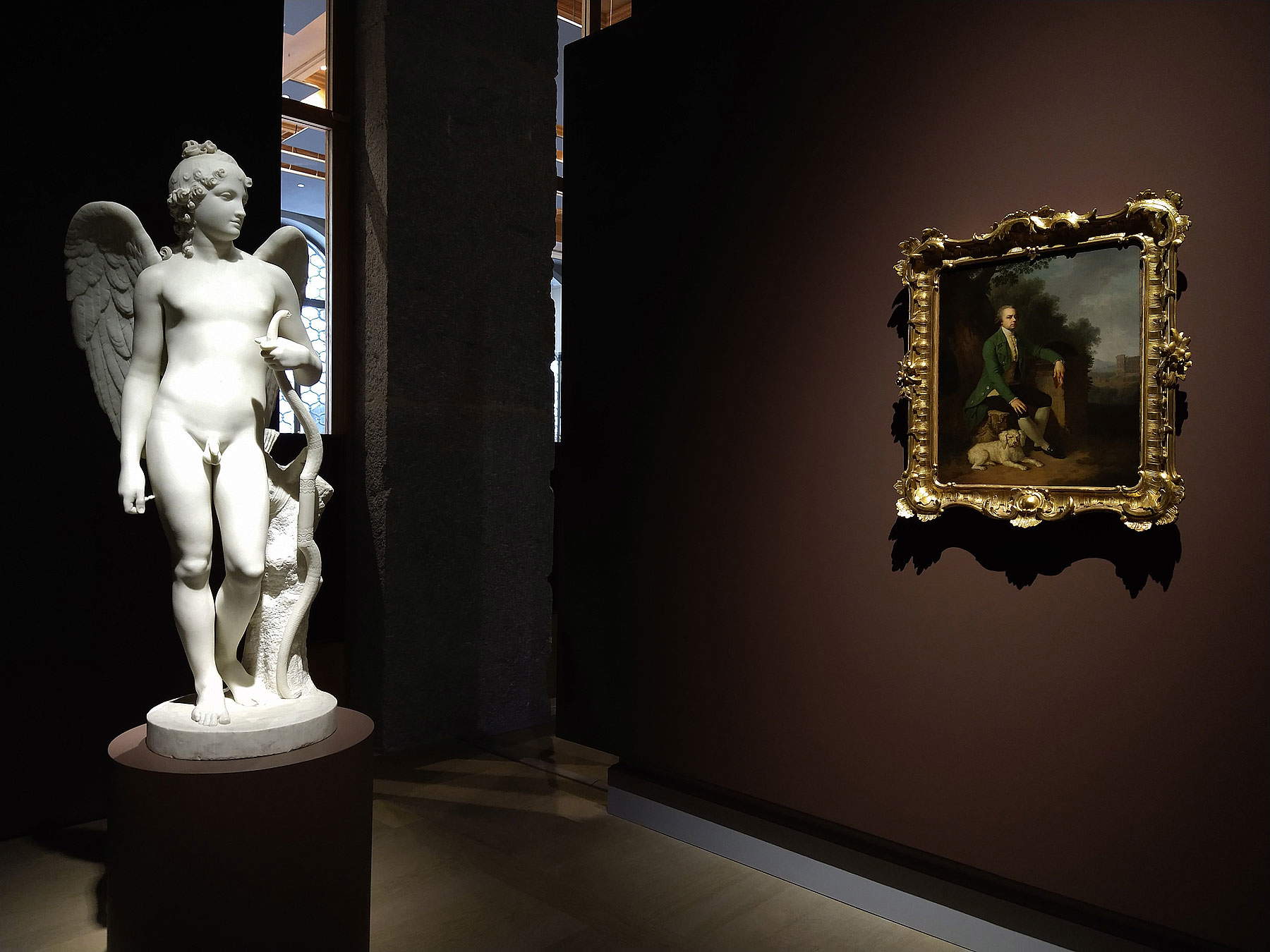
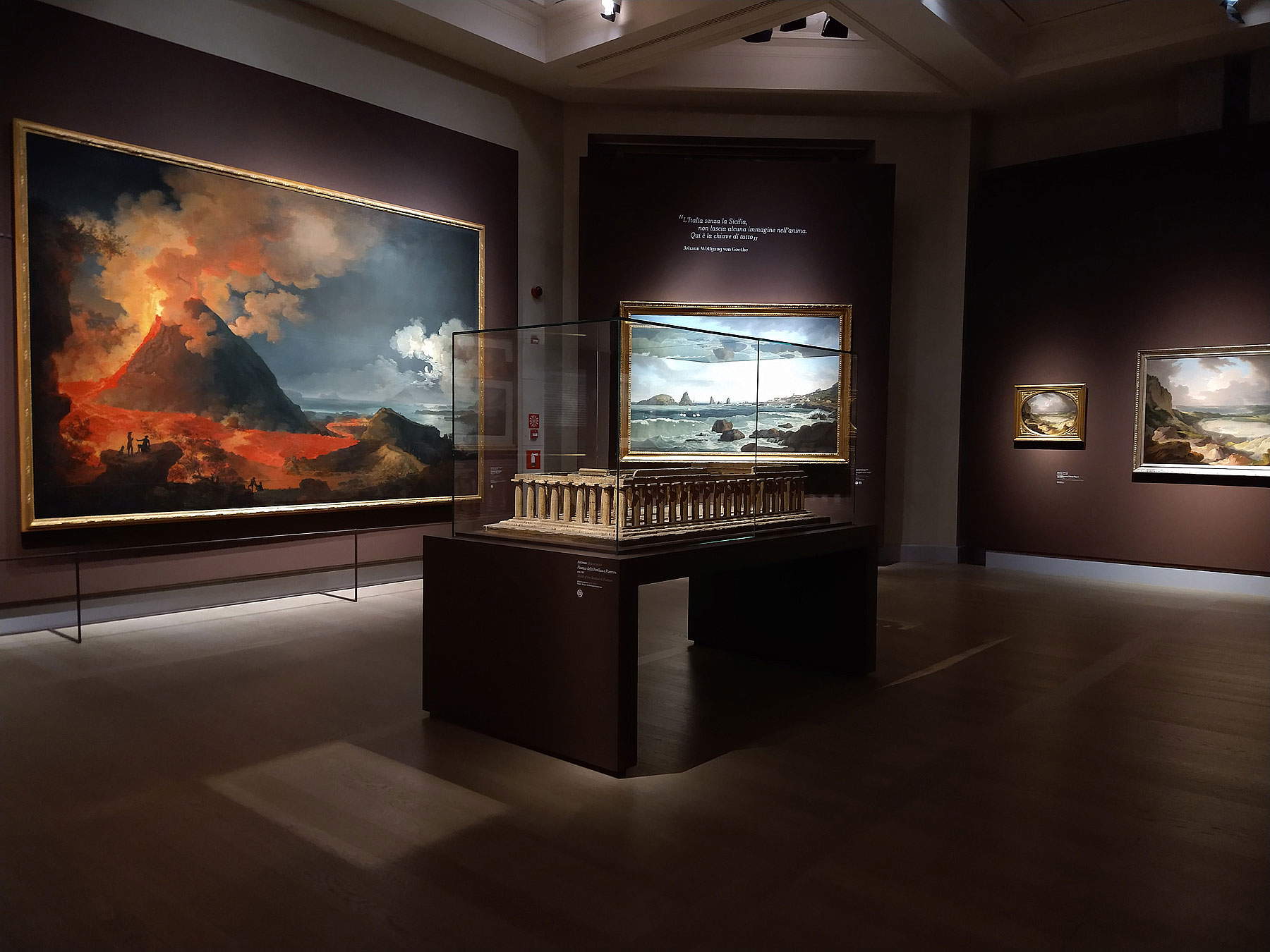
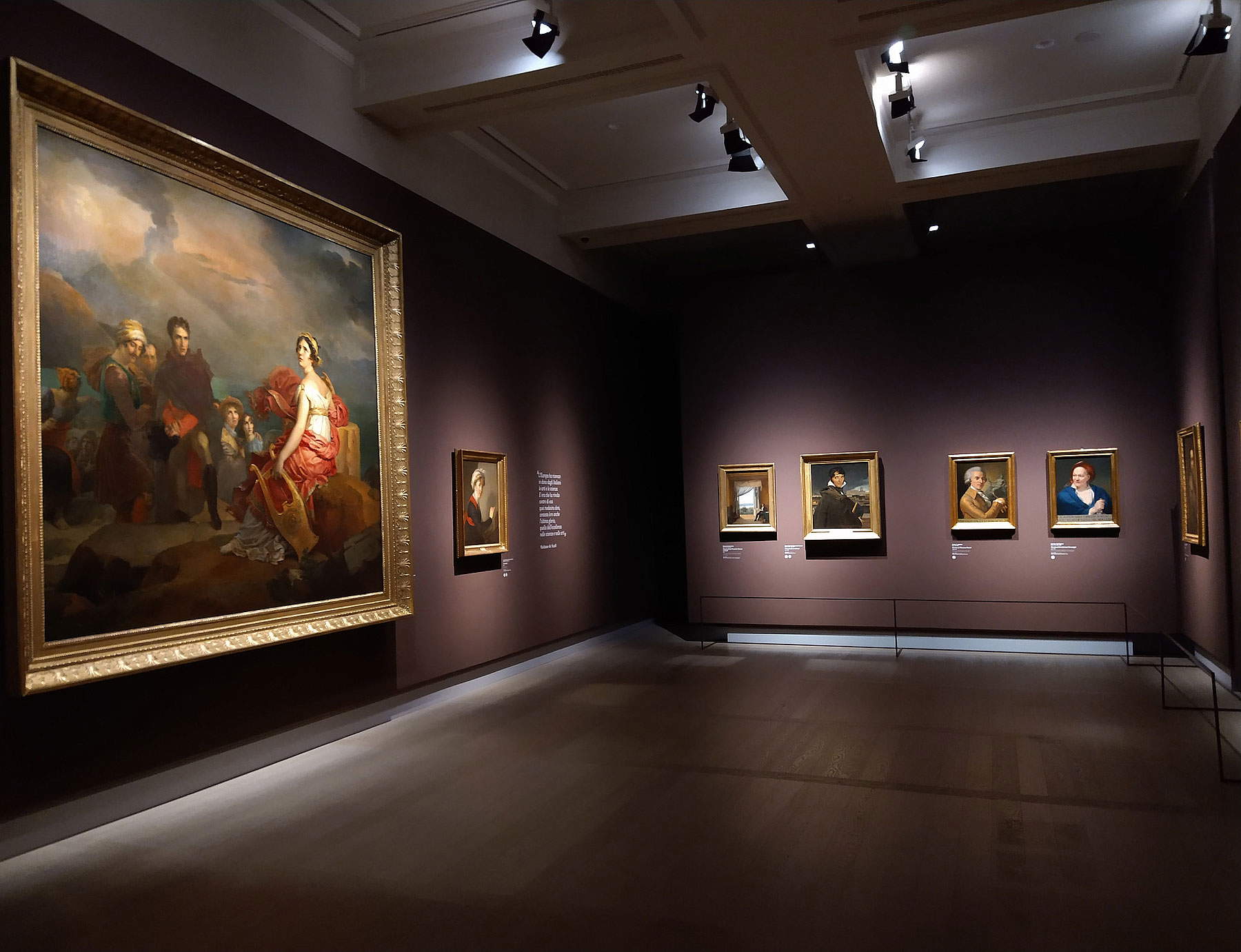
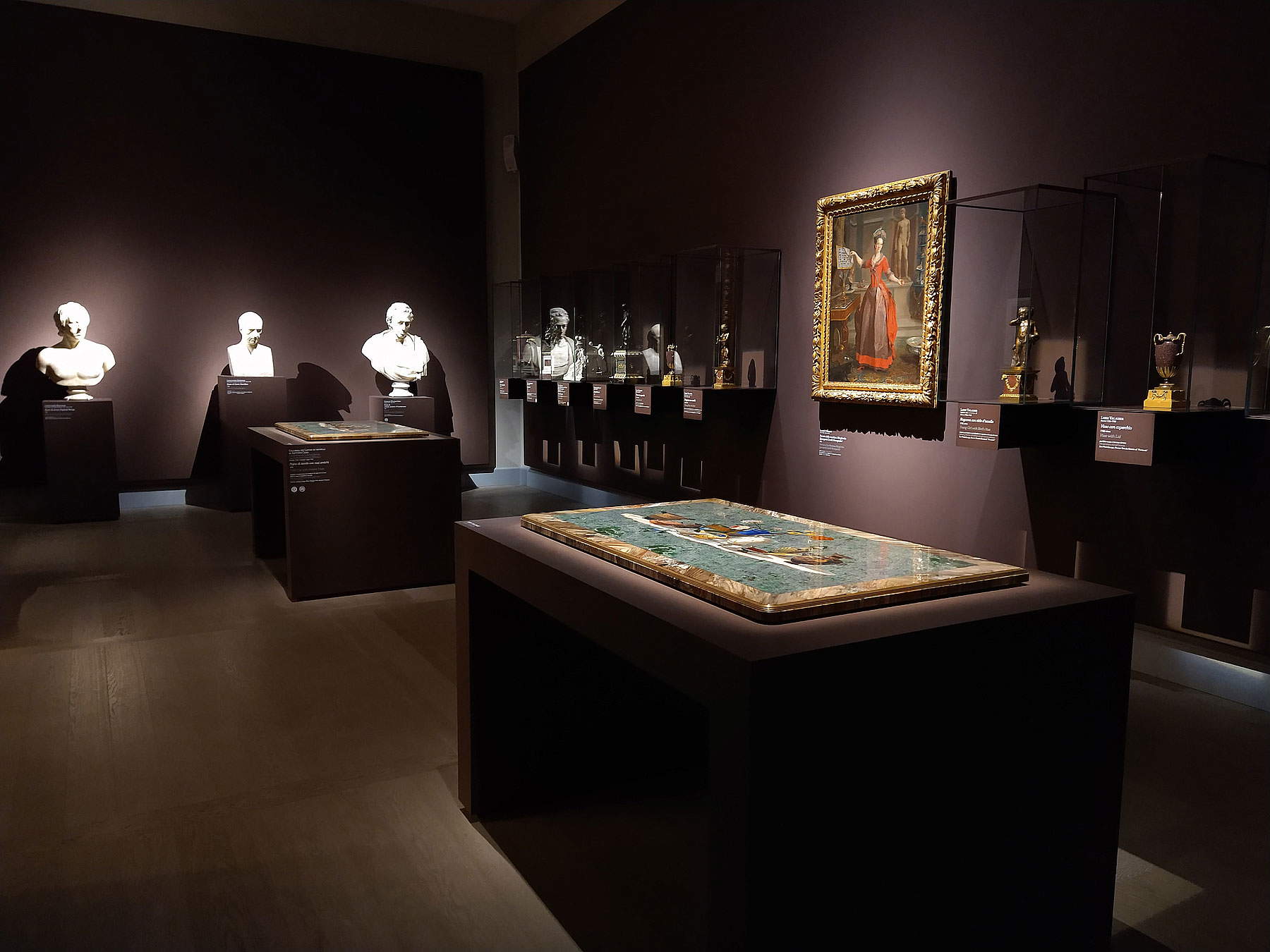
The exhibition catalog is published in Gallerie d’Italia | Skira Editions. On the occasion of the exhibition Grand Tour. Dream of Italy from Venice to Pompe ii, the book In missione in... Italy, the second volume of the Edizioni Gallerie d’Italia|Skira publishing project designed to bring elementary school children closer to art. The exhibition, under the High Patronage of the President of the Republic and in partnership with the National Archaeological Museum in Naples and the State Hermitage Museum in St. Petersburg, presents about 130 works from the Intesa Sanpaolo collection, private collections and numerous Italian and international cultural institutions such as The National Gallery in London, Muséand du Louvre in Paris, The Metropolitan Museum of Art in New York, Museo Nacional del Prado in Madrid, Rijksmuseum in Amsterdam, Victoria and Albert Museum in London, Österreichische Galerie Belvedere in Vienna, Statens Museum for Kunst in Copenhagen, Musée des Beaux-Arts in Lyon, Gallerie degli Uffizi in Florence, Capitoline Museums in Rome, Vatican Museums, and Museo e Real Bosco di Capodimonte in Naples. Loans also include two works from the United Kingdom and belonging to the Royal Collection of Queen Elizabeth II, as well as other works from major royal residences such as the Palace of Versailles, the Royal Palace of Caserta and the Pavlovsk Palace in St. Petersburg.
“The exhibition on the Grand Tour,” said Giovanni Bazoli, Chairman Emeritus of Intesa Sanpaolo, “set up in the Gallerie di Piazza della Scala, is the first one conceived and realized in Italy capable of offering a comprehensive look at such a vast theme, and the exhibition is the best of what those travelers admired along the peninsula, all suggested by the works created by the artists of that era. The masterpieces on display offer today’s visitors the opportunity to understand and relive the emotion felt centuries ago by the protagonists of the Great Journey when confronted with the timeless beauty of Italy’s landscapes and ancient places of art, the founding elements not only of our national identity, but also of European identity. The initiative, which benefits from the prestigious partnership of the Hermitage Museum in St. Petersburg and the National Archaeological Museum in Naples, confirms the leading role that Intesa Sanpaolo has gained over the years in the cultural and artistic landscape of our country.”
“This is an important day,” stressed Mayor Giuseppe Sala, “for the opening of this exhibition and to highlight the Gallerie d’Italia’s 10 years of commitment to our community, to the tourists who come to Milan, and to all those who can enjoy these splendid places and these wonderful initiatives. Culture plays a fundamental role and, let’s not hide it, physical places have their own weight. We have extremely interesting projects to try to hand over to the city new places (the Museum of Resistance, to give an example) or find formulas to grow other places, because tourism, this illustrious unknown for the Milanese of years gone by but which then turned out to be an important social and economic lever for us, for those who know it has objectively changed a lot but it is also very differentiated. Training tourism, which we see represented in the exhibition, do not think that it is no longer there: it is different. Training tourism is still alive today. Just think of 20th-century architecture: young architects come to Milan from all over Europe to understand the great contribution of 20th-century Italian architecture. It is not an insignificant share. So we have to believe that back then it was almost only educational tourism, today it is different, but it has a role, and Milan can be a candidate, because of its beauty and its ability to bring together ancient history and vision of the future, to be an ideal place for tourism.”
“The theme of this beautiful exhibition that has gathered masterpieces from Italian museums and foreign museums in a very important collaboration between public and private,” said Cultural Heritage Minister Dario Franceschini, “introduces the theme of the Grand Tour. We should be proud to think that generations and generations, for a few centuries, to form themselves and to complete their education had to come to Italy. I think there is an indication from this point of view as well: tourism will come back, it has already partly come back; it will come back as impressive as before and with even stronger numbers, and with even bigger concerns, because until 2019 we were talking about overbooking, about entrance fees to some places in Italian art cities, about overcrowding. What kind of tourism do we want? The low-cost tourism, the one that does not deepen, does not consume, does not even bring wealth, passes and goes, or vice versa the cultured tourism, made up of travelers, of people who are able to come, to understand, to immerse themselves in an authentic experience, to respect the fragility of our historical and artistic heritage? This we have to bring, make Italy known, make it all known and invite people to come to Italy to educate themselves.”
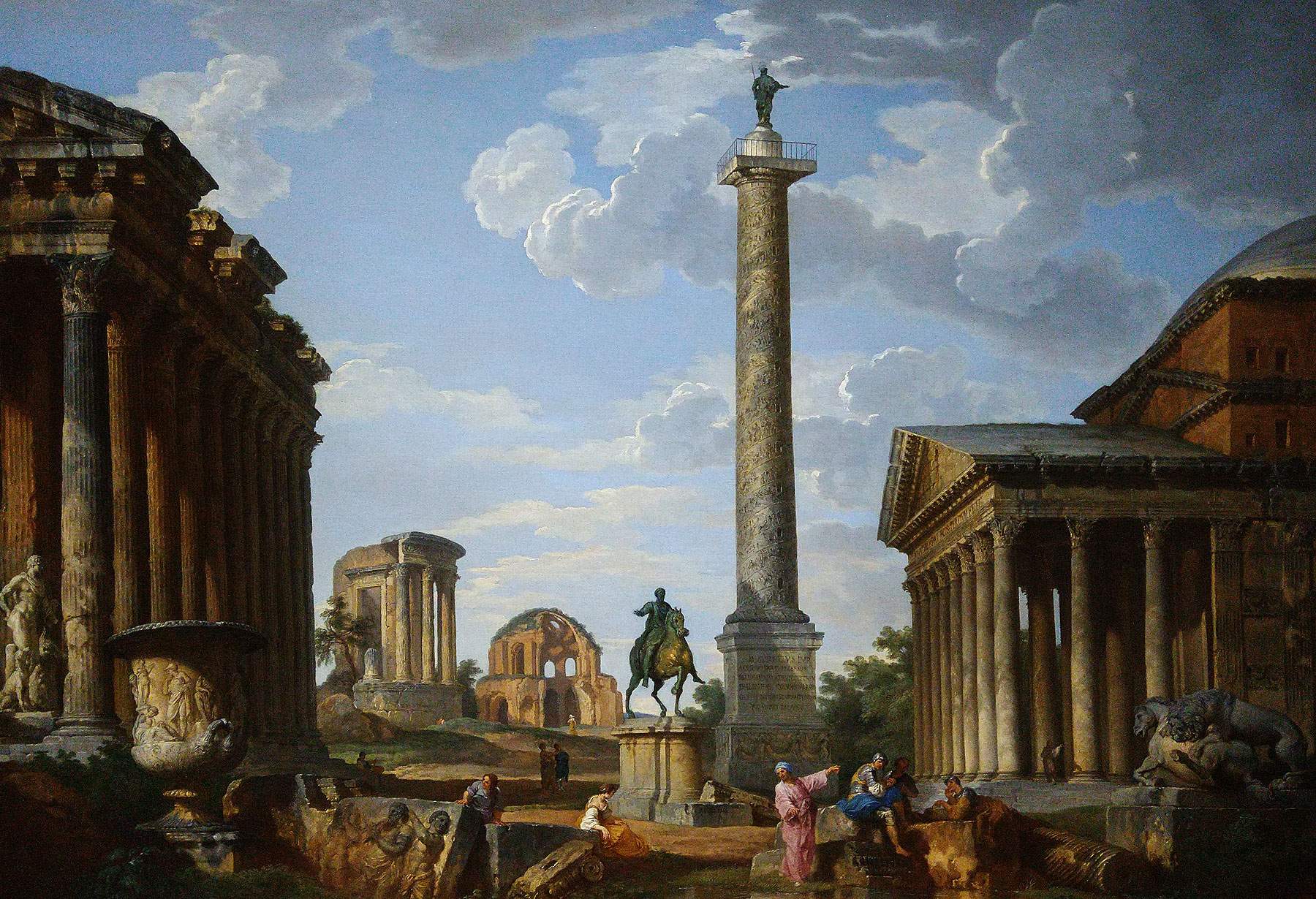 |
| Milan, at Gallerie d'Italia a major exhibition on the Grand Tour with 130 works |
Warning: the translation into English of the original Italian article was created using automatic tools. We undertake to review all articles, but we do not guarantee the total absence of inaccuracies in the translation due to the program. You can find the original by clicking on the ITA button. If you find any mistake,please contact us.